Table Of Content
- Essential Rain Safety Tips for Camping
- Invest in Quality Waterproof Gear
- Set Up a Weatherproof Shelter
- Protect Your Campsite from Water Accumulation
- Stay Warm and Dry in Wet Weather
- Opt for Proper Footwear and Clothing for Rainy Conditions
- Practice Fire Safety and Cooking in the Rain
- Choosing the Right Waterproof Gear
- Waterproof Clothing
- Waterproof Footwear
- Waterproof Gear for Your Gear
- Setting Up a Weatherproof Shelter
- Stay Dry and Cozy with These Tips
- Embracing the Rain
- Protecting Your Campsite from Water Accumulation
- Choose the Right Location
- Use a Tarp or Groundsheet
- Construct Proper Drainage
- Staying Warm and Dry in Wet Weather
- Invest in Quality Waterproof Gear
- Layer Up for Insulation
- Proper Footwear is Key
- Embrace the Power of Fire
- Proper Footwear and Clothing for Rainy Conditions
- Invest in Quality Rain Gear
- Layer Up!
- Opt for Quick-Drying Fabrics
- Don’t Forget Your Head and Hands
- Fire Safety and Cooking in the Rain
- Choose the Right Location
- Prepare Your Firewood
- Use Waterproof Matches or Lighters
- Create a Shelter for Your Fire
- Opt for Quick Cooking Methods
- Plan Simple and Nutrition-Packed Meals
- Frequently Asked Questions (FAQs)
Welcome, adventurous souls and camping enthusiasts, to a guide on mastering the art of rainy day camping! As someone well-versed in the wonders of the great outdoors, I understand the allure of exploring nature even when the skies decide to weep. In this blog post, we will delve into essential rain safety tips to help you stay dry, warm, and secure during your wet weather camping adventures.
When dark clouds loom overhead and raindrops start to fall, it’s crucial to be prepared. From choosing the right gear to setting up your campsite strategically, there are numerous ways to ensure a comfortable and safe experience despite the inclement weather. By mastering the skills of staying dry during rainy day camping, you can embrace the magic of nature without dampening your spirits.
Embracing the elements and understanding how to navigate through wet weather camping can truly elevate your outdoor experience. Whether you’re a novice camper or a seasoned outdoor enthusiast, the ability to stay dry and safe during rainy day camping is a valuable skill that can make all the difference in your adventures. So, gear up, pack your rain essentials, and get ready to conquer the challenges of wet weather camping like a pro!
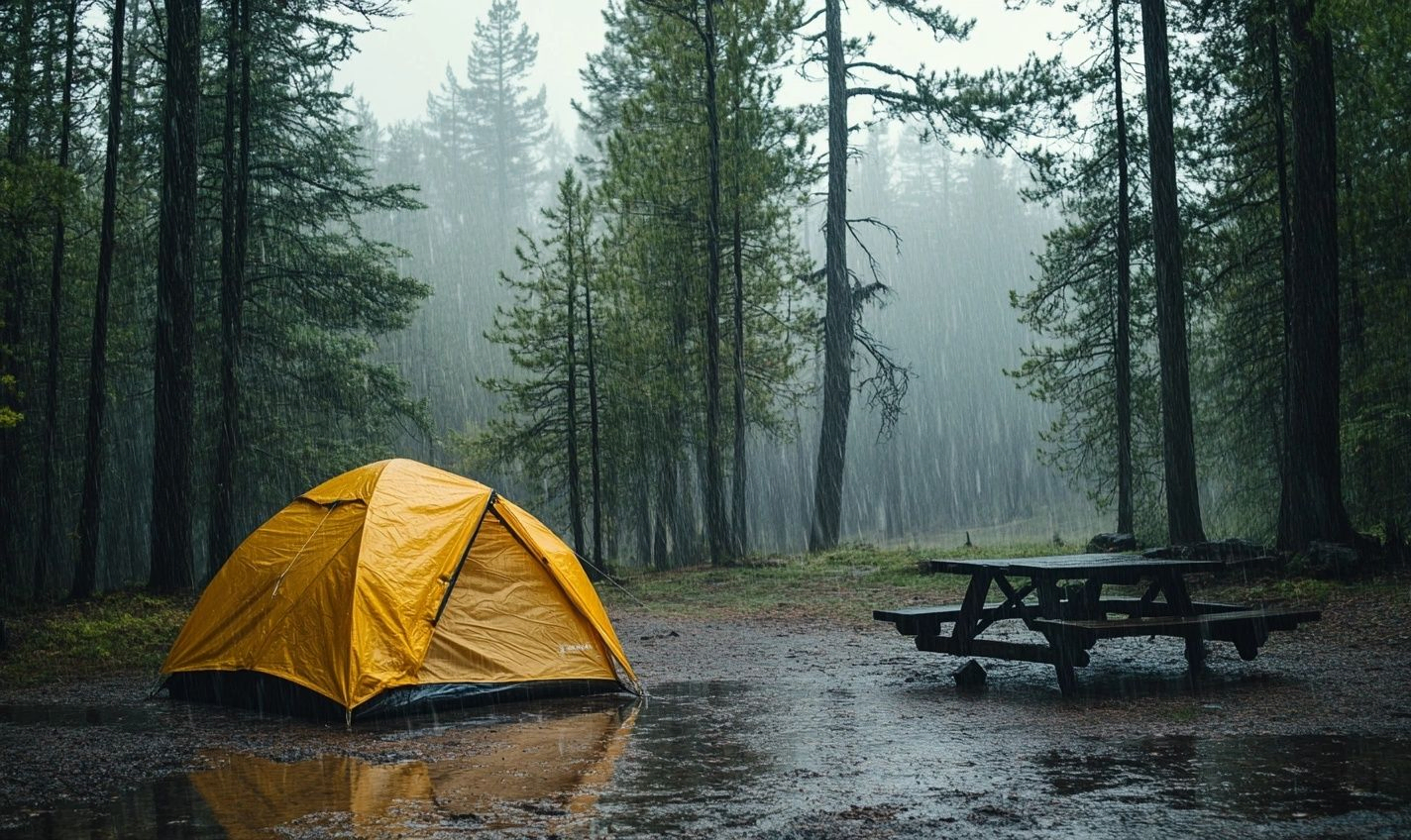
Essential Rain Safety Tips for Camping
Picture this: You’re out in the wilderness, excited for a camping adventure, but the weather takes a turn, and suddenly you’re facing a rainy day camping situation. Don’t fret! With the right knowledge and preparation, staying dry and safe in wet weather can still be a possibility.
Invest in Quality Waterproof Gear
Before heading out into the great outdoors, make sure you have the right gear to combat the rain. Investing in waterproof essentials like a rain jacket, rain pants, and waterproof footwear can make all the difference in keeping you dry and comfortable.
Set Up a Weatherproof Shelter
Choose a tent with a rainfly and set it up on high ground to avoid water accumulation. Ensure your tent is properly sealed and secure to prevent leaks. A well-pitched tent is your best defense against the elements.
Protect Your Campsite from Water Accumulation
- Elevate your tent on a platform or use a tarp underneath to prevent water from seeping in.
- Utilize drainage channels around your campsite to divert water away.
- Store gear and equipment in waterproof containers to keep them dry.
Stay Warm and Dry in Wet Weather
Layer up with moisture-wicking clothing to stay warm and dry. Change into dry clothes before bed to avoid getting cold during the night. Remember, staying dry is key to staying comfortable in rainy conditions.
Opt for Proper Footwear and Clothing for Rainy Conditions
Choose footwear with good traction to prevent slips and falls on wet surfaces. Pack extra socks to keep your feet dry and cozy. Don’t underestimate the power of dry socks in boosting morale on a rainy day.
Practice Fire Safety and Cooking in the Rain
- Set up a designated cooking area under a tarp or in a covered shelter.
- Use a camping stove instead of an open flame to minimize fire risks.
- Always have a backup plan for meals in case cooking in the rain becomes too challenging.
Remember, a little rain shouldn’t dampen your camping spirits! By following these rain safety tips and being prepared for inclement weather, you can still enjoy a memorable outdoor experience even on the wettest of days.
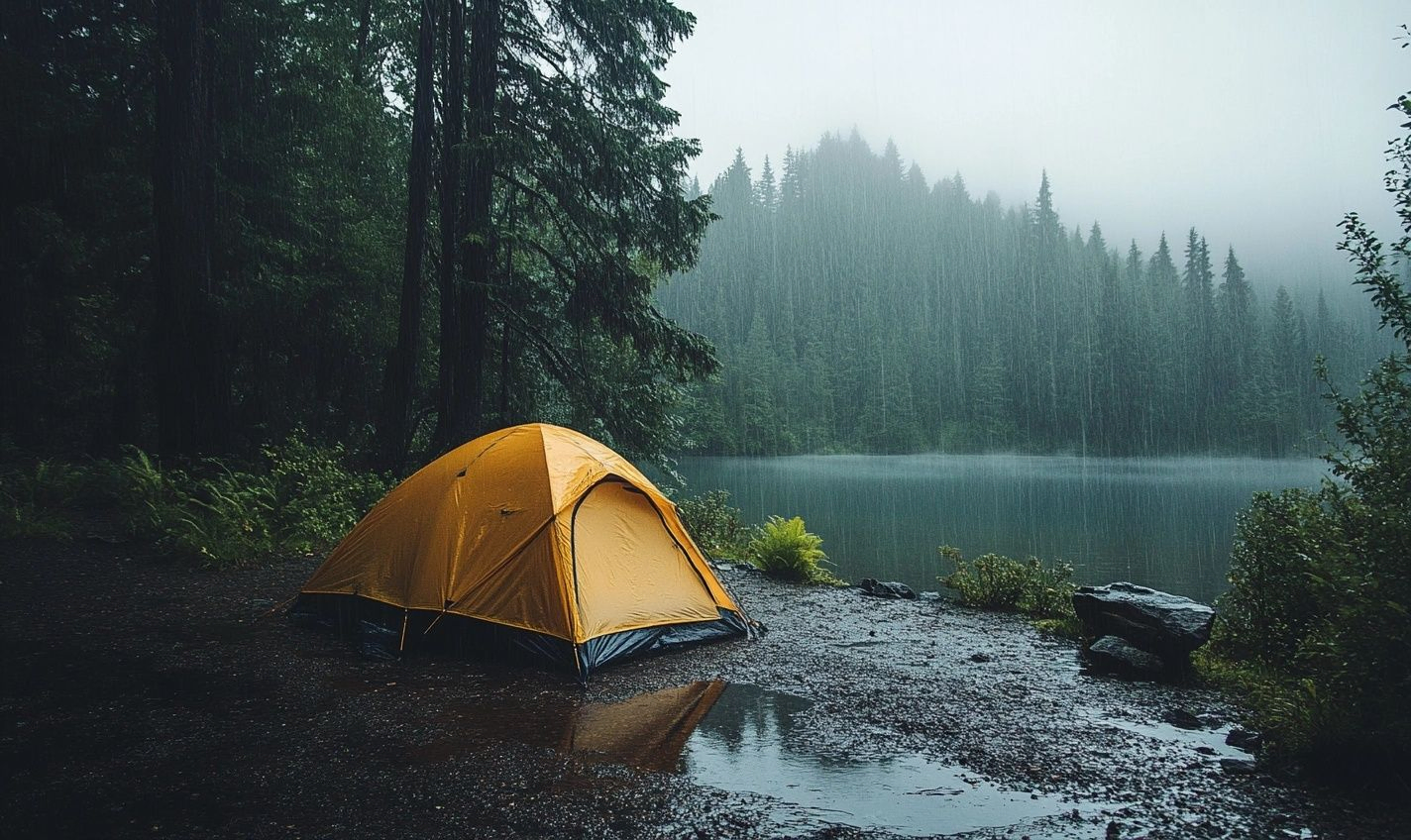
Choosing the Right Waterproof Gear
When it comes to camping in the rain, staying dry is essential for a comfortable and safe outdoor experience. Investing in high-quality waterproof gear can make all the difference between a soggy disaster and a fun adventure.
Waterproof Clothing
Opt for rain jackets and pants made from durable materials like Gore-Tex or nylon, which provide excellent protection against moisture.
Consider packing rain ponchos for quick and easy coverage when unexpected showers hit.
Waterproof Footwear
Choose waterproof boots with sturdy soles and good traction to keep your feet dry and prevent slips on wet terrain.
Make sure to wear moisture-wicking socks to keep your feet warm and blister-free even in the rain.
Waterproof Gear for Your Gear
Keep your camping gear dry by investing in a waterproof tent or bringing a tarp to cover your equipment.
Use dry bags or waterproof stuff sacks to protect your clothes, electronics, and other essentials from getting soaked.
Being prepared with the right waterproof gear can make a rainy day camping trip much more enjoyable and safe. Don’t let a little rain dampen your spirits – stay dry and make the most of your outdoor experience!
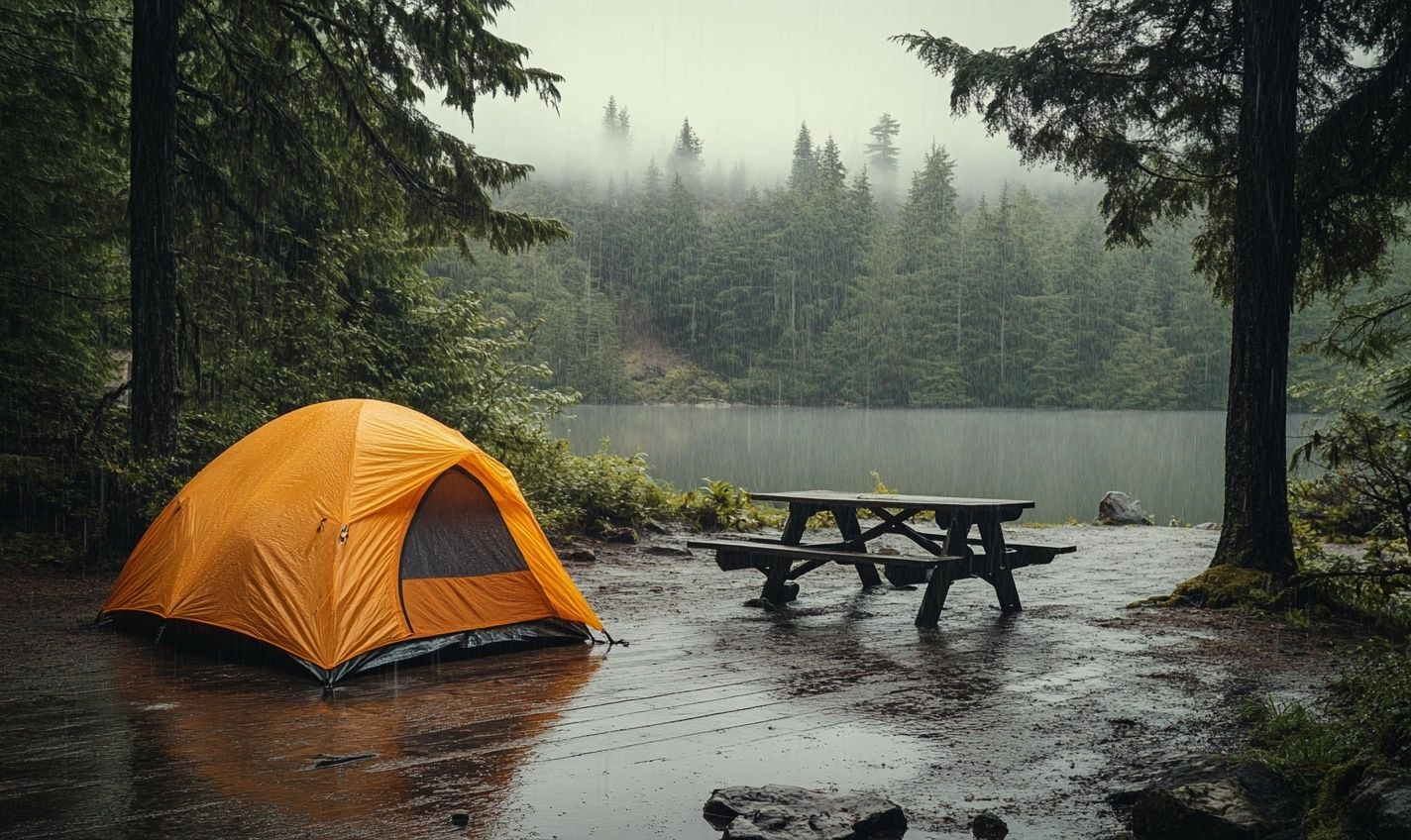
Setting Up a Weatherproof Shelter
When you’re out camping, getting caught in the rain can quickly turn a fun adventure into a soggy situation. But fear not, with a few clever tricks, you can set up a shelter that will keep you snug and dry, no matter how hard the rain pours.
Stay Dry and Cozy with These Tips:
- Choose a high spot: Avoid low-lying areas where water might accumulate.
- Use a waterproof tarp: Invest in a quality tarp to cover your tent for added protection.
- Angle the tarp: Ensure the tarp is slanted to allow rainwater to run off easily.
- Secure it well: Use sturdy stakes and ropes to prevent your shelter from blowing away in strong winds.
Embracing the Rain:
Remember, a rainy day camping can be an opportunity to test your skills and adapt to nature’s unexpected challenges. Admire how the raindrops dance on the leaves and breathe in the fresh, earthy scent that follows a downpour. By mastering the art of staying dry, you’ll feel a sense of accomplishment and resilience that will stay with you long after the storm passes.
So, next time the clouds gather and the rain starts to fall, don’t fret. With the right gear and a positive attitude, you can turn a wet weather camping trip into a memorable experience, filled with the soothing sound of rain on your shelter and the cozy warmth of a dry sleeping bag.
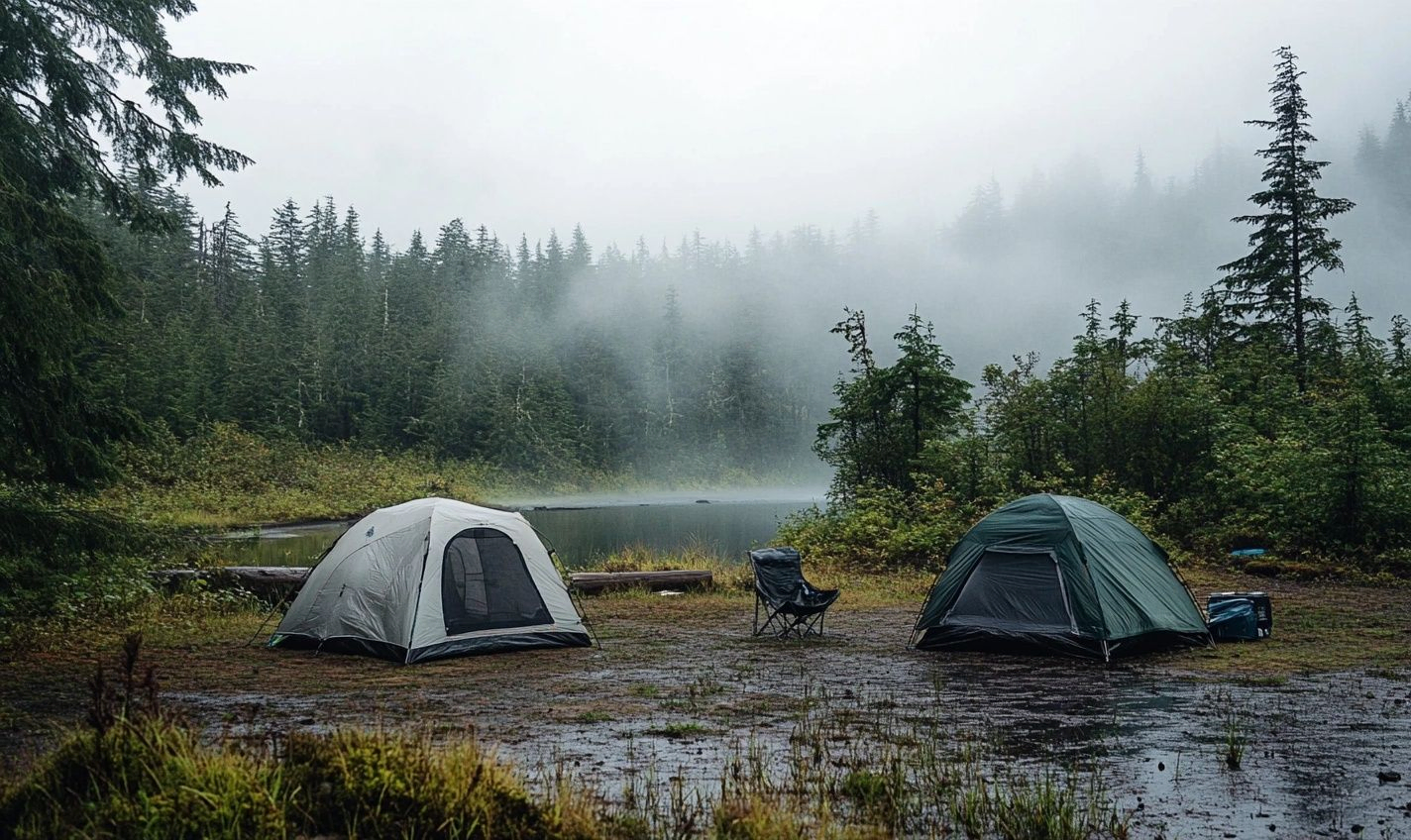
Protecting Your Campsite from Water Accumulation
So you’ve planned a camping trip and you wake up to the pitter-patter of raindrops on your tent. Rainy day camping can be challenging, but with the right strategies, you can stay dry and comfortable throughout your outdoor adventure. One key aspect to consider is protecting your campsite from water accumulation, as a flooded campsite can turn your experience into a soggy nightmare.
Choose the Right Location
When setting up your campsite, opt for a spot that is not prone to water pooling. Avoid low-lying areas and choose higher ground to prevent water from collecting around your tent.
Use a Tarp or Groundsheet
Place a tarp or groundsheet underneath your tent to provide an additional layer of protection from moisture seeping through the ground. This barrier will help keep your tent floor dry and cozy.
Construct Proper Drainage
Build drainage channels or trenches around your tent to divert water away from your sleeping area. This simple technique can prevent water from accumulating near your tent and flooding your campsite.
Remember, staying dry is essential for a comfortable camping experience, so take the necessary precautions to protect your campsite from water accumulation. With these rain safety tips in mind, you can embrace the elements and enjoy the beauty of nature without worrying about getting soaked!
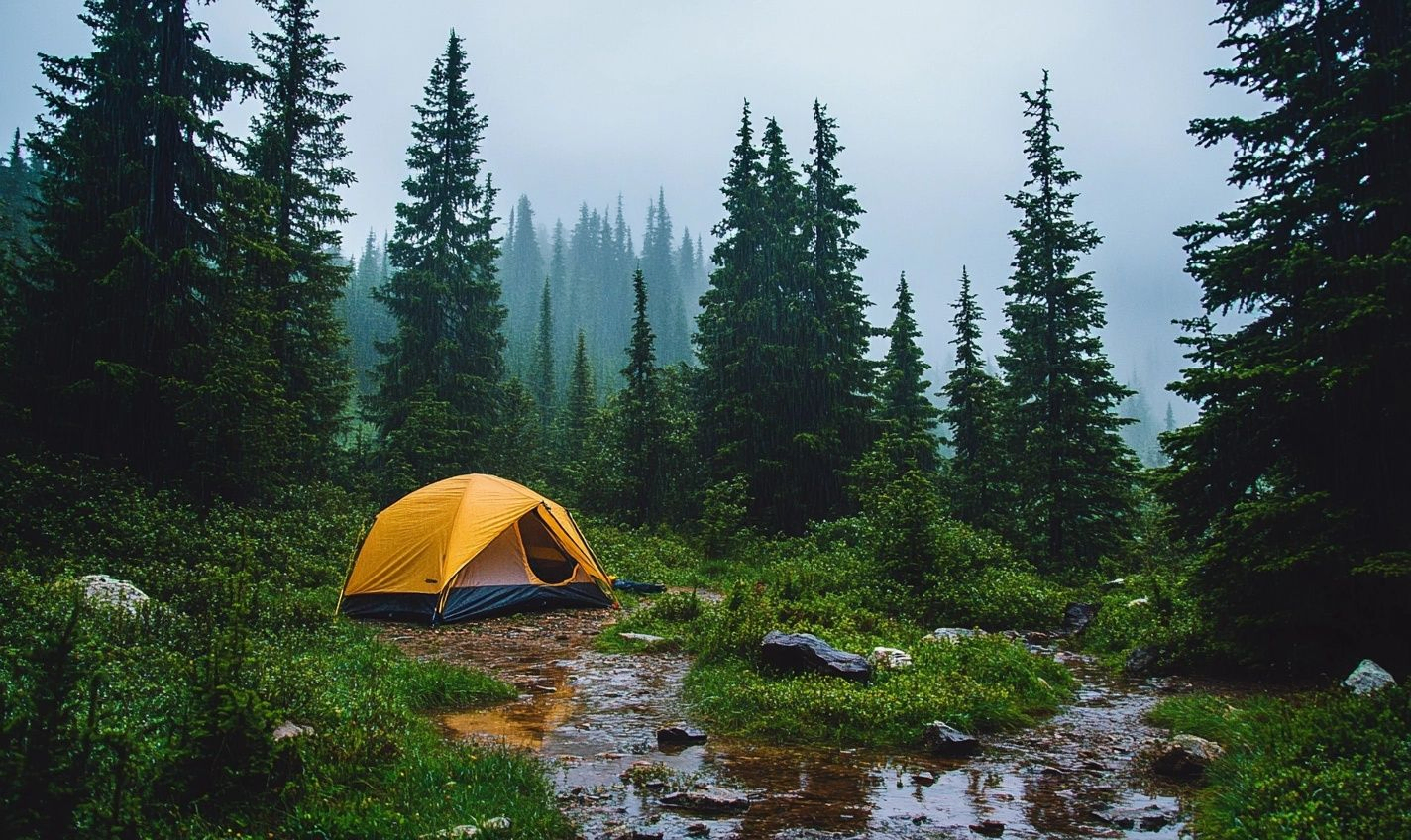
Staying Warm and Dry in Wet Weather
When faced with a rainy day camping excursion, it’s essential to have a plan in place to stay warm and dry throughout the experience. The last thing you want is to be soaked to the bone, shivering in your tent, wondering if you’ll ever feel warm again. But fear not, with the right strategies and gear, you can tackle wet weather camping like a pro.
Invest in Quality Waterproof Gear
One of the key components of staying dry during rainy day camping is having the proper waterproof gear. From waterproof jackets, pants, and boots to a durable rain cover for your backpack, investing in quality waterproof gear is a game-changer when it comes to staying dry in wet weather.
Layer Up for Insulation
Layering is essential for staying warm in rainy conditions. By wearing multiple layers of clothing, you create pockets of warm air that act as insulation against the cold, wet weather. Make sure to opt for moisture-wicking base layers, insulating mid-layers, and a waterproof outer shell to stay warm and dry.
Proper Footwear is Key
Having the right footwear can make or break your rainy camping experience. Make sure to pack waterproof hiking boots with good traction to keep your feet dry and prevent slips and falls on wet terrain. Remember, dry feet are happy feet!
Embrace the Power of Fire
Building a campfire in the rain might seem like a daunting task, but with the right know-how, you can enjoy the warmth and comfort of a crackling fire even in wet conditions. Pack waterproof matches, fire starters, and dry firewood to ensure you can get a fire going no matter the weather.
By following these tips and tricks, you can make the most of your rainy day camping adventure and stay warm and dry no matter what mother nature throws your way. Remember, a little rain shouldn’t dampen your camping spirit – embrace the elements and enjoy the beauty of nature in all its wet and wild glory!
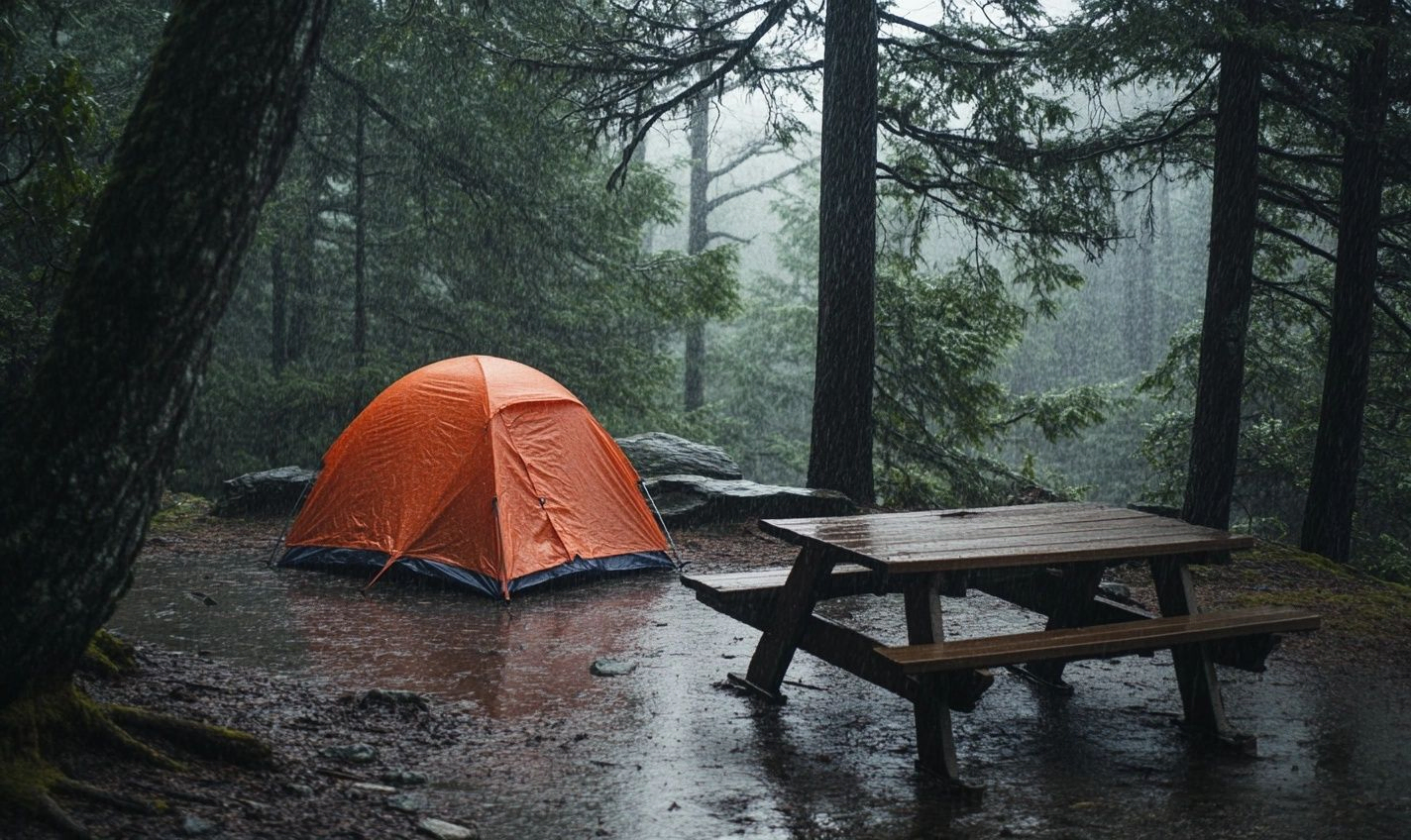
Proper Footwear and Clothing for Rainy Conditions
The key to enjoying a rainy day camping trip is to stay dry. This starts with proper footwear and clothing that can withstand the wet weather. So, what should you wear to ensure you stay warm and dry in the rain?
Invest in Quality Rain Gear
When it comes to rainy day camping, having waterproof and breathable clothing is essential. Look for rain jackets, pants, and ponchos made of water-resistant materials such as Gore-Tex that will keep you dry without causing you to sweat excessively. Waterproof boots are also a must to prevent your feet from getting soaked.
Layer Up!
Layering is crucial for staying warm and dry in wet weather. Start with a moisture-wicking base layer to keep sweat away from your skin. Add an insulating layer for warmth, and top it off with a waterproof and windproof outer layer to fend off the rain and cold winds.
Opt for Quick-Drying Fabrics
Choose clothing made of quick-drying materials such as polyester or nylon. These fabrics will wick moisture away from your skin, helping you stay dry and comfortable even in the wettest conditions.
Don’t Forget Your Head and Hands
Keep your head dry with a waterproof hat or hood, and ensure your hands stay warm and dry with water-resistant gloves. Wet hands and a soggy head can quickly lead to discomfort and chill, so it’s crucial to protect these areas as well.
By dressing appropriately for rainy weather, you can ensure a comfortable and enjoyable camping experience, even when the skies open up. Remember, staying dry is the key to staying warm in wet conditions!
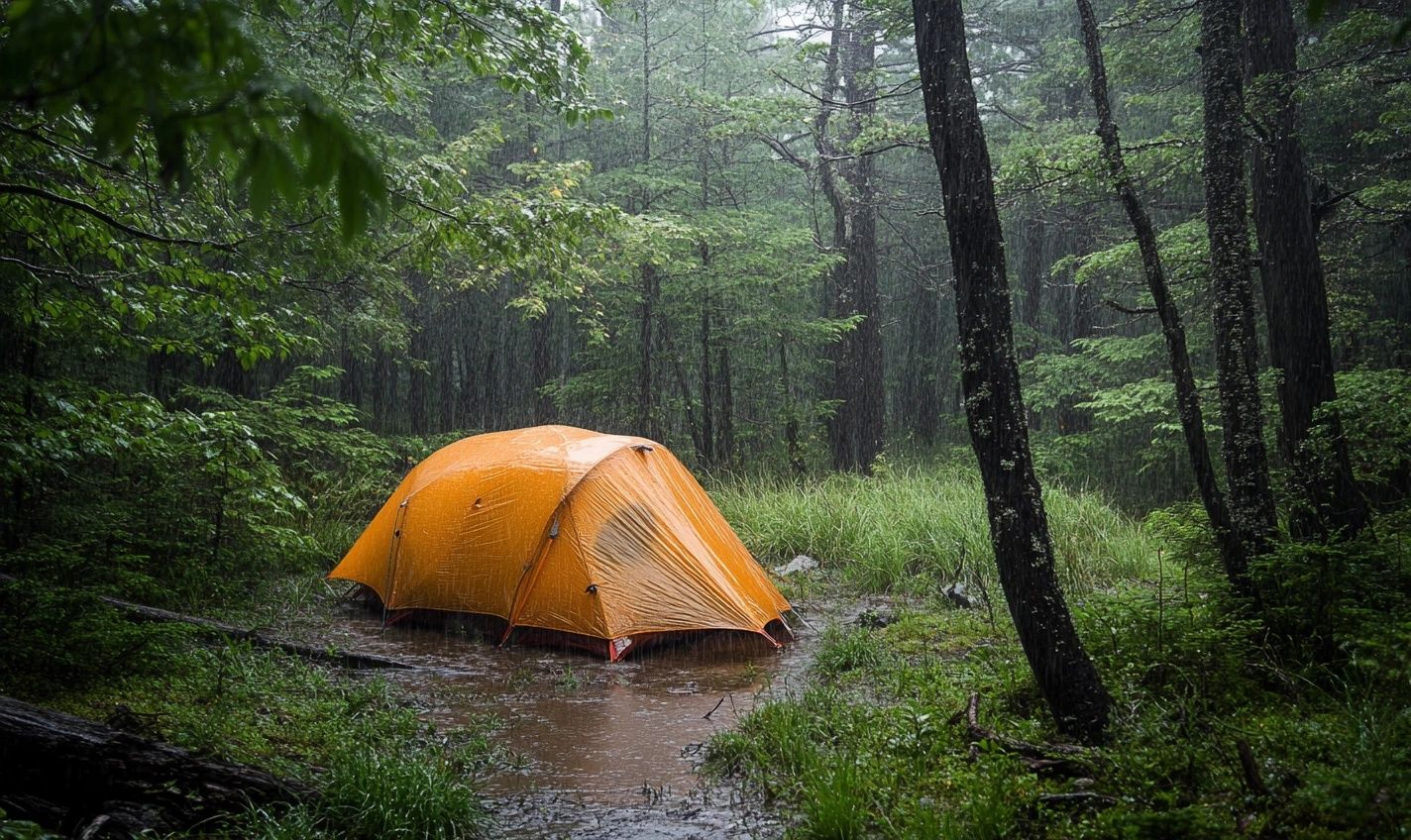
Fire Safety and Cooking in the Rain
When you find yourself camping in the pouring rain, one of the biggest challenges is staying dry and warm. But another critical aspect you need to consider is fire safety and cooking in such wet conditions. Here are some essential tips to ensure you can still enjoy a hearty meal and a cozy campfire even on a rainy day.
Choose the Right Location
Before starting a fire or setting up your cooking equipment, make sure you select a safe and dry spot. Avoid areas prone to flooding or with heavy overhanging branches that can drip water onto your fire.
Prepare Your Firewood
And dry firewood is key to successfully lighting a fire in the rain. Look for protected areas in the campsite where you can find dry sticks and logs. Consider bringing your own firewood or using a hatchet to split wet wood to access the dry interior.
Use Waterproof Matches or Lighters
But regular matches can become useless in wet conditions. Invest in waterproof matches or a butane lighter to ensure you can ignite your fire despite the rain.
Create a Shelter for Your Fire
To protect your fire from rainwater, build a simple lean-to or use a portable fire pit with a cover. This will help to keep your flames going and provide a dry space for cooking.
Opt for Quick Cooking Methods
Since rain can dampen your cooking fire, choose quick and efficient cooking techniques like using a portable stove, cooking on a grill over the fire, or preparing meals that require minimal cooking time.
Plan Simple and Nutrition-Packed Meals
During rainy camping days, opt for nutritious and easy-to-prepare meals that can provide you with the energy you need. Pack snacks, soups, and dehydrated meals that require minimal cooking and cleanup.
By following these fire safety and cooking tips for rainy camping, you can ensure that adverse weather conditions do not dampen your outdoor cooking experience. Remember to always prioritize safety and be prepared for whatever nature throws your way.
Conclusion
Embracing rainy day camping can add an exciting twist to your outdoor adventures, but being prepared is key to staying safe and dry. By following simple yet effective rain safety tips such as setting up your tent properly, packing the right gear, and choosing a suitable campsite, you can make the most of your wet weather camping experience.
Remember, safety always comes first when camping in the rain. Keep a close eye on changing weather conditions, ensure your gear is waterproof, and have a solid evacuation plan in place. By staying informed and prepared, you can navigate through any unexpected challenges that may arise during your outdoor getaway.
Whether you’re a seasoned camper or new to the world of outdoor adventures, facing rainy weather doesn’t have to dampen your spirits. With the right mindset, gear, and knowledge, you can make the most of your rainy day camping trip and create unforgettable memories despite the weather.
So, next time you see storm clouds on the horizon, don’t let them discourage you. Instead, gear up, stay dry, and embrace the unique experience that rainy day camping has to offer.
Frequently Asked Questions (FAQs)
Q: Is it safe to go camping in the rain?
A: Camping in the rain can be safe as long as you are prepared and take necessary precautions. It’s important to stay dry and ensure your gear is waterproof.
Q: How can I stay dry while camping in wet weather?
A: To stay dry while camping in the rain, make sure you have a quality waterproof tent, rain gear, and extra protection for your gear such as tarps.
Q: What are some essential tips for rainy day camping?
A: Some essential tips for rainy day camping include checking the weather forecast, packing extra clothing and socks, and setting up your campsite on higher ground to avoid flooding.
Q: Can I still have a campfire in the rain?
A: It is possible to have a campfire in the rain, but it can be challenging. Make sure your firewood is dry, and consider using a fire starter that is resistant to moisture.
Q: How should I store food during rainy weather?
A: Store your food in waterproof containers or bear-proof containers to keep it dry and safe from animals. Double bagging food items can also provide extra protection.
Q: What should I do if a storm approaches while camping?
A: If a storm approaches while camping, seek shelter in a sturdy building or your vehicle if possible. Avoid open fields, water bodies, and tall objects, and wait for the storm to pass before resuming activities.







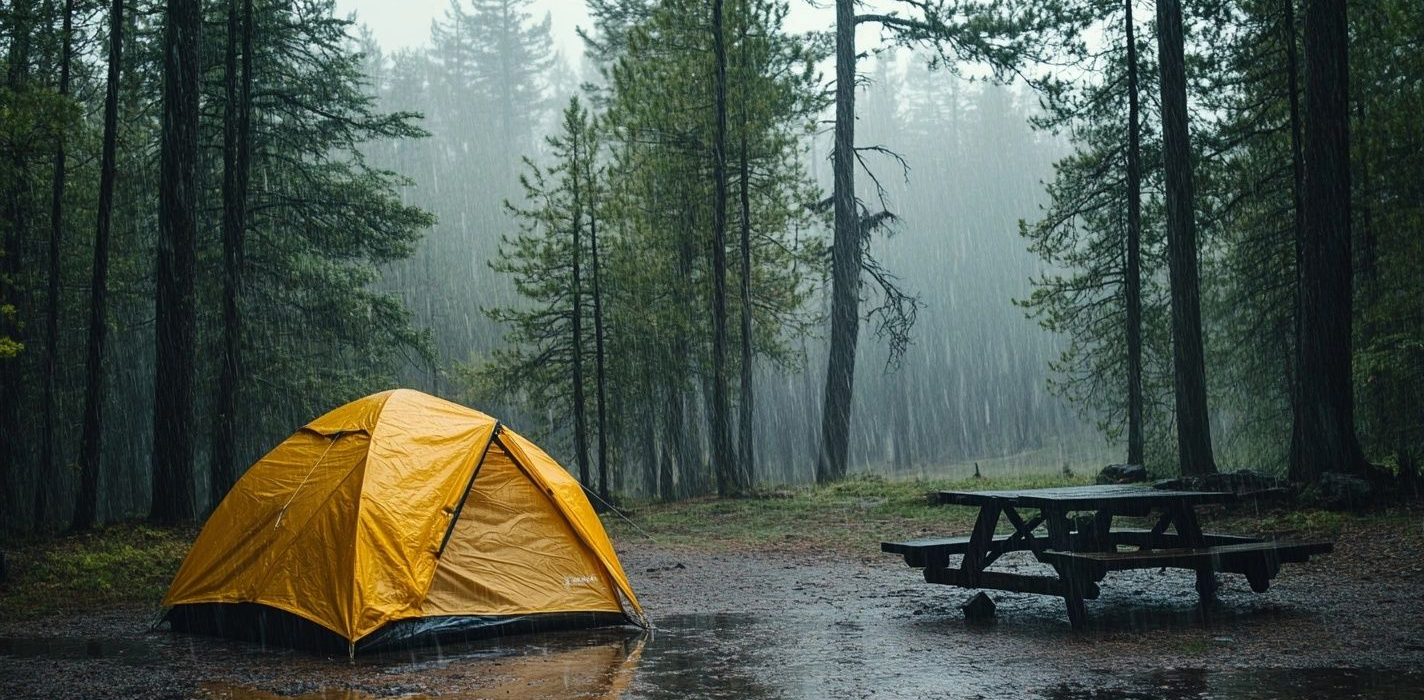
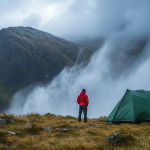
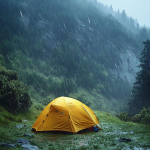
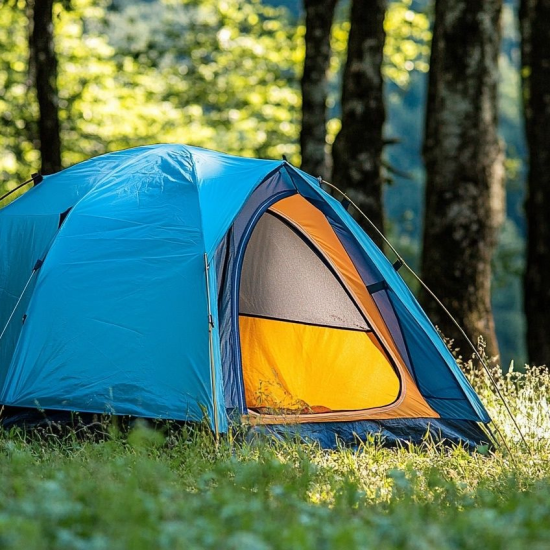
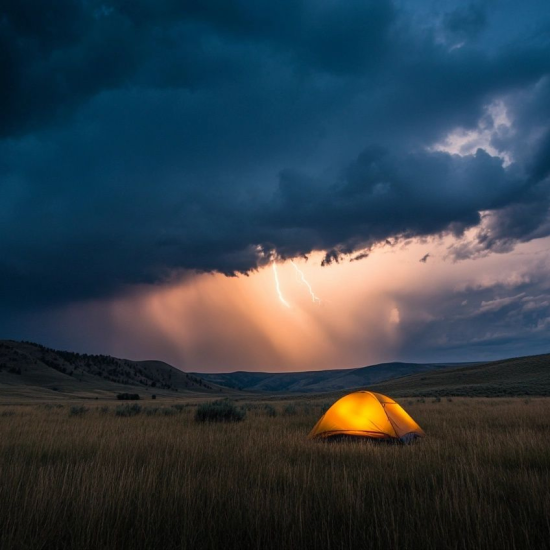
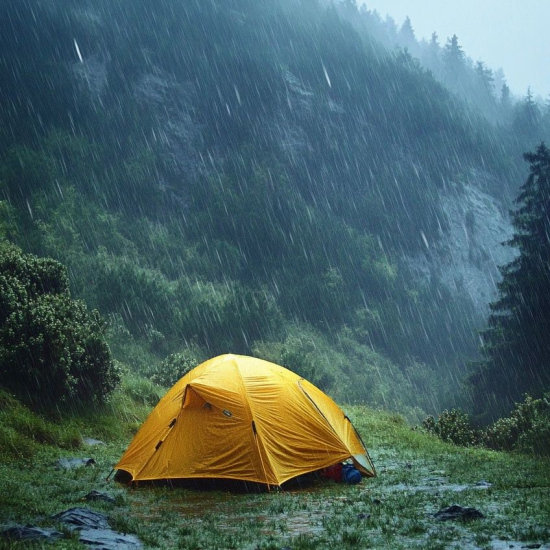
No Comment! Be the first one.